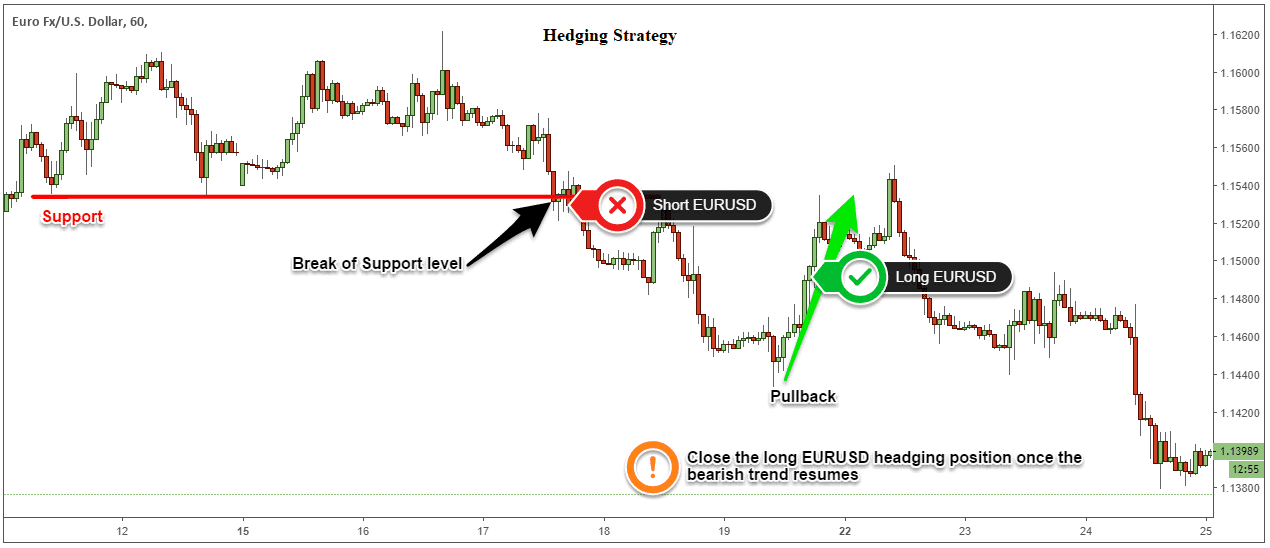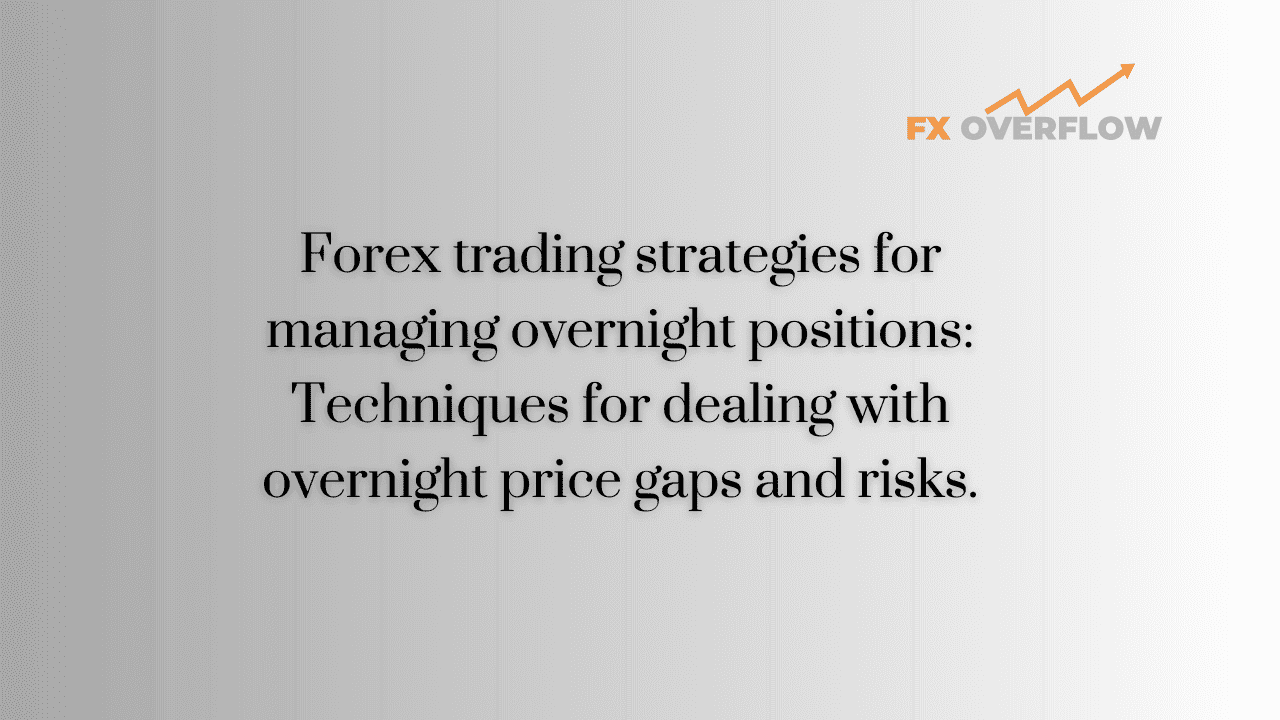Forex trading strategies for managing overnight positions: Techniques for dealing with overnight price gaps and risks.
The foreign exchange (forex) market operates 24 hours a day, five days a week, providing traders with ample opportunities to capitalize on price movements. However, one challenge that forex traders often encounter is managing overnight positions, especially in the face of potential price gaps and associated risks. Overnight price gaps occur when the market opens significantly higher or lower than the previous day's closing price, catching traders off guard and potentially resulting in unexpected losses. In this article, we will explore forex trading strategies that can help traders effectively manage their overnight positions and mitigate the risks associated with price gaps.
Table Content
I. Understanding Overnight Price Gaps and Risks
II. Forex Trading Strategies for Managing Overnight Positions
1. Using Stop Loss Orders
2. Utilizing Take Profit Orders
3. Implementing Hedging Strategies
4. Monitoring Economic Events and News Releases
5. Diversifying Positions and Portfolios
III. Footnote
Understanding Overnight Price Gaps and Risks
Before delving into strategies for managing overnight positions, it's crucial to understand what overnight price gaps are and the risks they pose. An overnight price gap occurs when there is a substantial difference between the closing price of a trading day and the opening price of the following day. These gaps can be triggered by a variety of factors, including economic news releases, geopolitical events, market sentiment shifts, and trading activity during off-hours.
Overnight price gaps can have significant implications for traders who hold positions overnight. If a trader's position is in the direction opposite to the gap, they might incur substantial losses as the market rapidly moves against their trade. Conversely, a favorable gap can lead to unexpected profits. The key challenge is that traders have limited control over the market's behavior during off-hours, making it crucial to adopt effective strategies to manage these risks.
Forex Trading Strategies for Managing Overnight Positions
1. Using Stop Loss Orders
Stop loss orders are a common risk management tool that traders can employ to limit potential losses from overnight price gaps. A stop loss order is an instruction to close a trade at a specific price level, which helps prevent losses from escalating beyond a predetermined threshold. By setting a stop loss order, traders can protect their positions in the event of adverse price movements.
When dealing with overnight positions, traders should consider placing stop loss orders at levels that account for potential price gaps. This means setting stop loss levels slightly beyond the expected range of overnight price movements. While this strategy does not guarantee absolute protection, it can help limit losses in case of unexpected gaps.
2. Utilizing Take Profit Orders
In addition to using stop loss orders, traders can employ take profit orders to lock in profits when the market moves in their favor. A take profit order is an instruction to close a trade at a predetermined profit level. By setting take profit orders, traders can ensure that they capture gains even if they are unable to monitor the market continuously.
When managing overnight positions, it's important to strike a balance between setting take profit levels that reflect the trader's profit targets and allowing room for potential price gaps. Overly conservative take profit levels might result in premature trade exits, while overly aggressive levels could lead to missed opportunities. A prudent approach is to consider recent price volatility and historical price gap patterns when determining take profit levels.
3. Implementing Hedging Strategies
Hedging involves opening a second position that counteracts the potential losses of the original trade. This technique can be particularly useful for managing overnight positions and mitigating the impact of price gaps. One common hedging strategy is to simultaneously hold both a long and a short position on the same currency pair. This way, if an adverse price gap occurs, the losses in one position can be offset by gains in the other.

It's important to note that while hedging can provide a degree of protection against overnight price gaps, it also comes with its own complexities and costs. Traders need to carefully consider factors such as transaction costs, spreads, and potential margin requirements when implementing hedging strategies.
4. Monitoring Economic Events and News Releases
Price gaps often occur due to unexpected economic events, news releases, or geopolitical developments during off-hours. To manage overnight positions effectively, traders should stay informed about upcoming events that could impact the forex market. Economic calendars and news sources can provide valuable insights into events that might trigger significant price movements.

By being aware of potential catalysts, traders can make informed decisions about whether to keep their positions open overnight or close them ahead of anticipated events. Additionally, traders can adjust their risk management strategies based on the level of market uncertainty associated with upcoming news releases.
5. Diversifying Positions and Portfolios
Diversification is a fundamental principle of risk management in trading. By spreading their exposure across multiple currency pairs or assets, traders can reduce the impact of adverse price gaps on their overall portfolio. Diversification helps ensure that a single price gap on one currency pair does not disproportionately affect the trader's entire trading capital.

Traders should aim to diversify their positions in a way that aligns with their risk tolerance and trading objectives. This involves considering the correlation between different currency pairs, as well as other asset classes that might provide a hedge against forex-related risks.
Footnote
Managing overnight positions in the forex market requires a combination of strategic planning, risk management, and vigilance. Overnight price gaps can catch traders off guard and result in unexpected losses or gains, highlighting the importance of adopting effective strategies to navigate these challenges. By utilizing tools such as stop loss and take profit orders, implementing hedging strategies, staying informed about economic events, and diversifying positions, traders can enhance their ability to manage overnight risks and make more informed decisions.
It's important for traders to recognize that there is no one-size-fits-all approach to managing overnight positions, as each trader's risk tolerance, trading style, and market outlook can differ. Therefore, traders should carefully assess the strategies discussed in this article and adapt them to their individual circumstances. With careful planning and disciplined execution, traders can minimize the impact of overnight price gaps and enhance their overall trading success.











Discussion